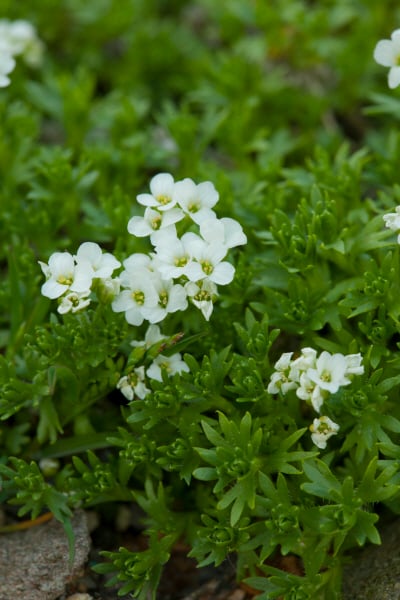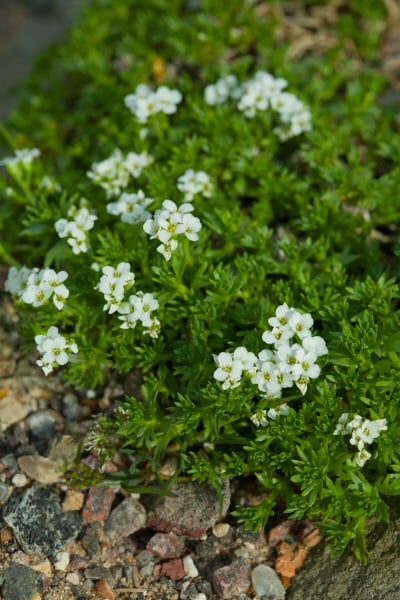Petrocallis pyrenaica
rock beauty
A cushion-forming, evergreen perennial to 5cm, with dense rosettes of three-lobed, grey-green leaves. Small clusters of pink-purple, or white, vanilla-scented flowers appear in spring
Size
Ultimate height
Up to 10cmTime to ultimate height
2–5 yearsUltimate spread
0.1–0.5 metresGrowing conditions
Moisture
Well–drainedpH
Acid, Alkaline, NeutralColour & scent
| Stem | Flower | Foliage | Fruit | |
| Spring | Purple White | Green Grey Silver | ||
|---|---|---|---|---|
| Summer | Green Grey Silver | |||
| Autumn | Green Grey Silver | |||
| Winter | Green Grey Silver |
Position
- Full sun
Aspect
South–facing or West–facing or East–facing
Exposure
Sheltered Hardiness
H7Botanical details
- Family
- Brassicaceae
- Native to GB / Ireland
- No
- Foliage
- Evergreen
- Habit
- Matforming
- Genus
Petrocallis are cushion-forming perennials with rosettes of lobed leaves and clusters of four-petalled flowers on short stems in spring
- Name status
Correct
- Plant range
- Europe (Mts)
How to grow
Cultivation
Requires poor, gritty, very well-drained soil in full sun. Intolerant of winter wet, so in many areas better grown in an alpine house
Propagation
Propagate by seed sown in a container in a cold frame in autumn, or by separating rosettes in early summer and rooting them as cuttings
Suggested planting locations and garden types
- City and courtyard gardens
- Rock garden
- Cottage and informal garden
- Gravel garden
- Patio and container plants
Pruning
No pruning required
Pests
Susceptible to aphids, glasshouse red spider mite and glasshouse whitefly if grown under cover
Diseases
Generally disease-free
Love gardening
Sign up to receive regular gardening tips, inspiration, offers and more
View our Privacy Policy
Get involved
The Royal Horticultural Society is the UK’s leading gardening charity. We aim to enrich everyone’s life through plants, and make the UK a greener and more beautiful place.

